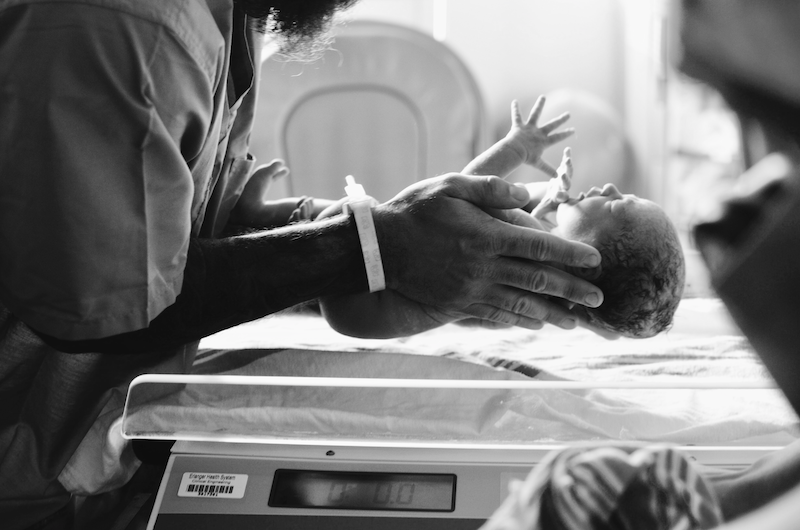Nitrous Oxide
Nitrous Oxide (N2O) is a colourless, non-flammable gas that was first discovered in 1772, by English scientist Joseph Priestley. Humphry Davy recognised its analgesic properties in 1799; the euphoric effects of inhaling it led to it being colloquially referred to as ‘laughing gas’. Its low tissue solubility, low cost and minimal cardiorespiratory complications have all contributed to the popularity of the gas in medicine.
It is, by far, the most commonly used general anaesthetic in history. However, studies have found harmful effects to be associated with Nitrous Oxide exposure. Many anaesthetists question its continued routine use in medicine.
Nitrous Oxide for Labour Analgesia
Entonox gas (nitrous oxide combined with oxygen) is a common pain relief option for women in labour. The gas helps to manage pain throughout the body without resulting in a loss of sensitivity or muscle movement. Oxygen levels are to be monitored continuously whilst a person is receiving N2O.
Compared with an injectable opioid, Nitrous Oxide provides a similar amount of pain relief. However, it does not carry the same side effects for the newborn. One of the concerns with the use of nitrous oxide for labour analgesia is the amount of gas that is exhaled by the patient into the surroundings. Care providers must therefore take safety precautions to monitor and reduce exposure.
Controlling Exposure to Nitrous Oxide during Anaesthesia
Because of a diverse range of concerns, the use of Nitrous Oxide as an anaesthetic is declining in Western countries. However, its popularity as a recreational drug is increasing.
Workers exposed to Nitrous Oxide could suffer harmful effects. Over-exposure to the gas during the administration of anaesthesia can lead to decreased mental performance, audio-visual ability, and manual dexterity.
Research also indicates that adverse reproductive effects may be a result of chronic Nitrous Oxide exposure Control measures must, therefore, be put in place to greatly reduce exposure where possible.
The design for operating theatres, for example, where the gas is administered, should consider air exchange requirements and the use of scavenging equipment to maintain a safe working environment.
Contraindications of Nitrous Oxide
Despite generally being considered safe, there are many situations where the use of Nitrous Oxide is contra-indicated. The gas can cause a rise in intra-cranial pressure. Therefore, the gas should never be administered when a patient has suffered head injury or if a pre-existing condition denotes air trapped in the body.
The continuous use of N2O must be accompanied by close clinical supervision and haematological monitoring, as it can lead to vitamin B12 deficiency in susceptible patients. Pre-operative assessments must always be undertaken to determine any underlying conditions. This does not, however, eliminate the risk of using Nitrous Oxide entirely.
Monitoring Nitrous Oxide Exposure
At Workplace Exposure, we work with care providers to help them to keep their workplace safe for staff and patients. We provide keyturn solutions to monitor exposure with no disruption to patient care. Please get in touch on 0800 689 4386 or email us at enquiries@workplaceexposure.co.uk and we will be delighted to help.
Other Services
Many other hazards exist in Hospitals and Workplace Exposure offers a wide range of other Occupational Hygiene monitoring services, below is a list of the services we offer:
COSHH Air Monitoring
- Nitrous oxide monitoring in operating theatres, recovery rooms, burn treatment units and maternity wards
- Anaesthetic gases in theatres, (e.g. sevoflurane, desflurane, isoflurane)
- Ozone levels in print rooms.
- Wood dust in joiner workshops.
- Xylene and ethanol exposure in Histology.
- Total inhalable dust levels within linen rooms.
- Propan-2-ol, xylene and ethanol exposure in Cytology.
- Inhalable and respirable dust within plaster clinics including Respirable Crystalline Silica (RCS).
- Exposure to acetic acid, ethanol, propylene glycol and other substances in Endoscopy equipment cleaning.
- Solder fumes (colophony), methyl methacrylate, inhalable dust, respirable dust and respirable crystalline silica in Maxillo-facial units.
- Chlorine dioxide monitoring from preparation of disinfectant used throughout the hospital from Maternity to Endoscopy. Example disinfectants are difficil-s and tristel.
- Subtilisin monitoring from Endoscopy
- Ethanol and propan-2-ol monitoring from Pharmacy preparation areas.
Microbiological sampling for Moulds, bacteria, yeasts and fungi
- Temperature
- Humidity
- Air Flow
- Carbon monoxide
- Carbon dioxide
We’re here to help
Our expert team have experience working with a variety of different businesses to ensure they offer a safe, compliant working environment. Our professional solutions and advice help to ensure your business meets compliance standards and is operating to best practice. If you need help in carrying out a COSHH air monitoring survey to help select the correct PPE, or your workplace noise assessment, we’re here to help.
Our approach
Get in touch with Workplace Exposure. Either give us a call on 0800 689 4386, or fill in our enquiry form to discuss your monitoring or consultancy requirements.
We’ll then provide you with a no-obligation proposal, we can often give an initial idea of fees whilst we discuss your needs.
Once you’ve accepted our proposal we can then schedule the work.
Following our site visit we’ll provide you with a comprehensive report giving you advice, recommendations and control measures where appropriate. Implement the outcomes for compliance and a happier healthier workplace.
